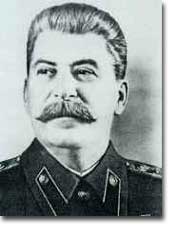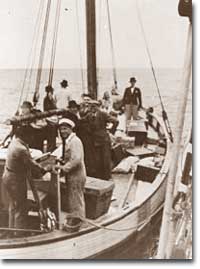|
LINKS |
The Second World War
The Axis powers of Germany, Italy, and Japan were slowly absorbing new territories by intimidation and attack. In 1935, Benito Mussolini's troops sacked Ethiopia. Adolf Hitler defied the Treaty of Versailles by remilitarizing Germany in 1935 and annexing Austria in 1938. Japan rapidly marched through Asia, brutalizing the Chinese people. Fearful of another destructive war, Western Europe and the United States did little to stop the Axis short of issuing toothless condemnations. When Hitler indicated he wished to acquire the Czech Sudetenland, a region inhabited primarily by ethnic Germans, European leaders finally decided to meet with Hitler face to face.
Once the Munich Pact had been broken, Britain and France threatened war if Hitler were to invade neighboring Poland. After securing a nonaggression pact with Stalin that protected him from an eastern attack, Hitler defiantly invaded Poland on September 1, 1939. Two days later, Britain and France declared war on Germany. World War II had begun. The face of war had changed considerably since World War I. German armed forces employed the strategy of the blitzkrieg, or lightning war, establishing control of western Europe and Scandinavia in less than ten months. And the distinction between the home front and the battlefront, maintained throughout World War I, collapsed in the face of Nazi terror tactics and Allied bombing campaigns. The Battle of Britain in late 1940 introduced a new age of air war. British radar helped prevent a Nazi land invasion. Towards the end of the war, the Allies' fire bombing of German cities produced hundreds of thousands of casualties, while the Nazis' use of new long-range missiles like the V1 and V2 rockets terrorized weary British civilians. The United States would detonate the first atomic weapon in August 1945 to end the war in the Pacific. In what was known as the Battle of the Atlantic, German submarines, U-boats using "wolfpack" tactics, were effective early in the war in destroying Allied supply convoys coming from America. But by 1943, technological developments like sonar and improved air-based radar enabled Allied ships and planes destroy the German subs.
Another 3,000,000 European Jews died in Nazi concentration camps, as did other social and ethnic groups deemed unfit by racist Nazi theorists. Seven million "guest" workers from Eastern Europe toiled in German war factories. Many of these slave laborers died from disease or exhaustion. The war also produced a river of refugees — nearly 25 million displaced persons. Europe's buildings, roads, bridges, and railways were devastated. Besides the human catastrophe and the environmental damage, World War II would lead to decolonization in Africa and Asia, the birth of the United Nations, the rise of existentialist thought, and the Cold War, which would divide Europe once again. |
||
| Resistance | |||
| The Holocaust | |||
| Decoding Nazi Secrets | |||
| The End of the Reich | |||
   |
|||


